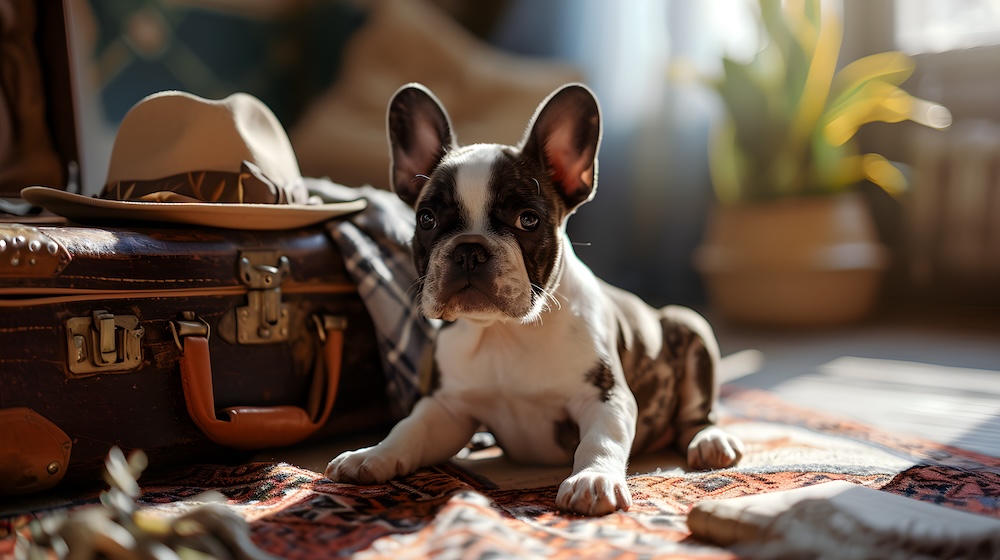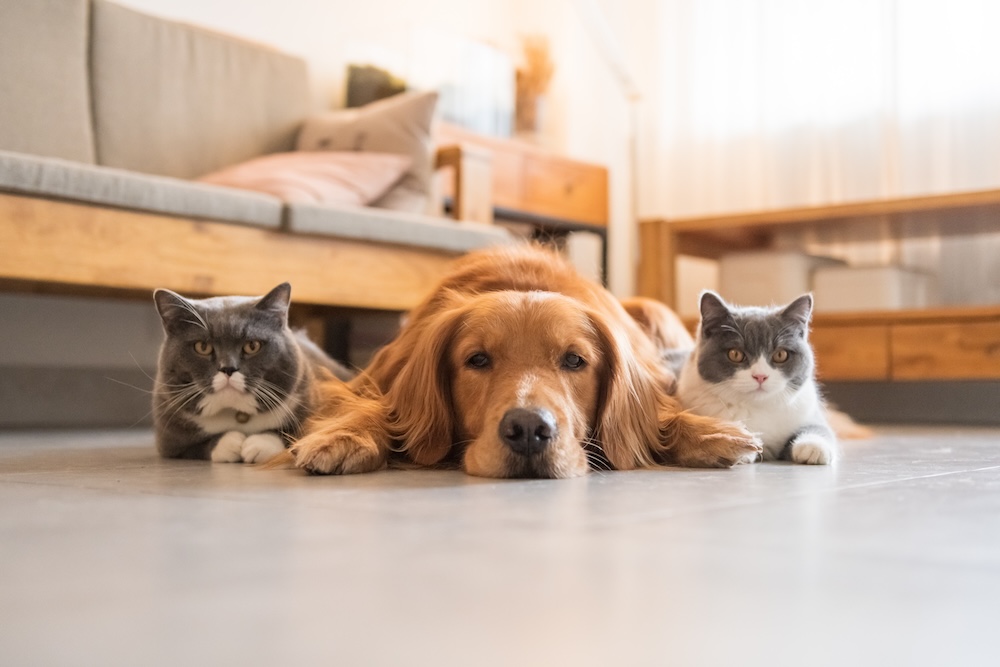Traveling with your furry companion can be a rewarding experience, but it also requires careful planning to ensure your pet’s comfort and safety. Whether you’re hitting the road or flying to your destination, knowing how to prepare for safe travel with pets is essential to keep them calm, secure, and happy throughout the journey. At Faithful Friends Veterinary Clinic, we understand that your pet is a cherished member of your family, and we’re here to help you make your trip as smooth as possible.
In this article, we’ll explore key tips for ensuring safe travel with pets, covering both road trips and air travel, so you and your pet can enjoy the adventure stress-free.
Preparing for a Road Trip with Your Pet
Traveling by car with your pet can be a fun and flexible way to explore new places, but it requires some thoughtful planning to ensure your pet’s safety. Here’s how you can prepare for a safe and comfortable road trip traveling with your pet.
1. Use a Pet Carrier or Seat Belt Harness
For your pet’s safety, it’s important to secure them in a pet carrier or use a seat belt harness designed for pets. Allowing your pet to roam freely in the car can be dangerous, as sudden stops or accidents can cause injuries. A sturdy, well-ventilated carrier or a crash-tested harness can keep your pet safe and comfortable during the journey.
- Carriers are ideal for smaller pets and should be large enough for them to stand up, turn around, and lie down. Secure the carrier with a seat belt to prevent it from sliding around.
- Harnesses are a great option for larger dogs, as they keep your pet safely restrained while allowing some mobility to sit or lie down.
2. Plan for Regular Pit Stops
Just like humans, pets need regular breaks during long road trips. Plan to stop every 2-3 hours to give your pet a chance to stretch, relieve themselves, and drink some water. Always keep your pet on a leash during pit stops, as new environments can be overwhelming, and it’s important to prevent them from running off.
Bring along a collapsible water bowl and bottled water for your pet to stay hydrated. Avoid feeding your pet a large meal right before the trip, as this can lead to motion sickness.
3. Keep Your Pet Cool and Comfortable
Temperature control is essential for keeping your pet safe in the car. Never leave your pet unattended in a parked car, even with the windows cracked. The interior temperature of a car can rise quickly, even on mild days, putting your pet at risk of heatstroke. Keep the air conditioning on during the drive and provide a soft blanket or bedding in the carrier for added comfort.
4. Pack a Pet Travel Kit
Prepare a travel kit specifically for your pet to ensure you have everything you need during the trip. Some essential items include:
- Food and water
- Portable food and water dishes
- Pet waste bags or a portable litter box for cats
- A leash and harness
- Any necessary medications
- A blanket or your pet’s favorite toy for comfort
- Veterinary records, including proof of vaccinations, in case of an emergency
5. Consider Pet-Friendly Accommodations
If your road trip involves an overnight stay, be sure to book accommodations at pet-friendly hotels or vacation rentals. Call ahead to confirm their pet policies, and ensure you have a comfortable and familiar space for your pet to relax after a long day of travel.
Safe Air Travel with Pets
Flying with pets can be more complicated than road trips, but with the right preparation, it’s possible to ensure a safe and stress-free experience for both you and your pet. Here are some tips for safe travel with pets by air:
1. Check the Airline’s Pet Policy
Before booking your flight, research the airline’s pet policy to determine whether your pet can fly in the cabin or will need to be transported in the cargo hold. Each airline has different guidelines regarding pet travel, including size and breed restrictions, so it’s important to review them in advance.
- In-Cabin Travel: Small dogs and cats that meet the size requirements can usually travel in the cabin, placed in an airline-approved pet carrier that fits under the seat in front of you. This is the safest and most comfortable option for your pet.
- Cargo Hold: For larger pets, the cargo hold may be the only option. While airlines take precautions to keep the cargo area climate-controlled and secure, it’s still a more stressful experience for your pet. Make sure to use a sturdy, well-ventilated travel crate that meets the airline’s specifications.
2. Get a Health Certificate
Most airlines require a health certificate from your veterinarian, issued within 10 days of your flight. This certificate verifies that your pet is healthy and up to date on vaccinations. Additionally, your vet can provide advice on keeping your pet calm and comfortable during air travel.
3. Choose Nonstop Flights
When booking your flight, opt for nonstop flights to minimize the time your pet spends in transit and avoid the stress of layovers. If your pet must travel in the cargo hold, try to schedule flights during cooler times of the day, such as early morning or late evening, to reduce the risk of temperature-related issues.
4. Familiarize Your Pet with the Carrier
Before the trip, allow your pet to become familiar with the travel carrier by leaving it out at home and encouraging your pet to explore it. Place treats, toys, or a blanket inside to create positive associations. This will help reduce your pet’s anxiety on the day of travel.
5. Pack Your Pet’s Essentials for the Flight
When flying, it’s important to pack your pet’s essentials in your carry-on bag, especially if they’ll be in the cabin with you. Items to include are:
- A collapsible water bowl
- A small amount of food (particularly for longer flights)
- A leash and waste bags for bathroom breaks
- A soft blanket or favorite toy for comfort
If your pet is traveling in the cargo hold, be sure to label the crate clearly with your contact information and include a “Live Animal” sticker.
6. Anti-Anxiety Medications
For pets who experience stress during travel, there may be some anti-anxiety supplements or medications that can be prescribed. Be sure to ask your veterinarian what options might work for your pet.
General Safety Tips for Traveling with Pets
- Microchip Your Pet: Before any long trip, ensure your pet is microchipped and that the contact information is up to date. This increases the chances of being reunited with your pet if they get lost during your travels.
- ID Tags: Make sure your pet is wearing a collar with updated identification tags, including your phone number.
- Consult Your Veterinarian: If your pet has any underlying health issues or if you’re concerned about their ability to handle travel, consult your veterinarian for guidance.
Safe Travels!
Whether you’re embarking on a road trip or taking to the skies, planning ahead for safe travel with pets is the key to a smooth journey. By preparing your pet with the right supplies, ensuring they are comfortable and secure, and following the tips outlined above, you can ensure your pet’s safety and well-being while traveling. At Faithful Friends Veterinary Clinic, we’re here to help you prepare for your pet’s travels and answer any questions you may have about keeping them healthy on the go. Safe travels to you and your furry friend!




